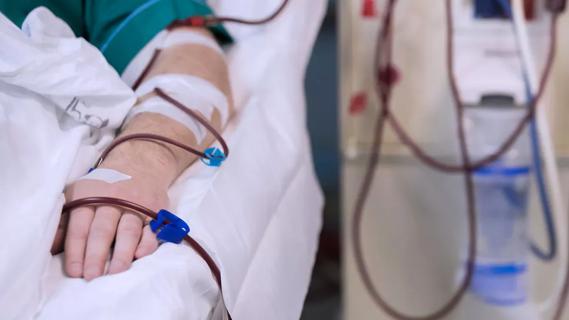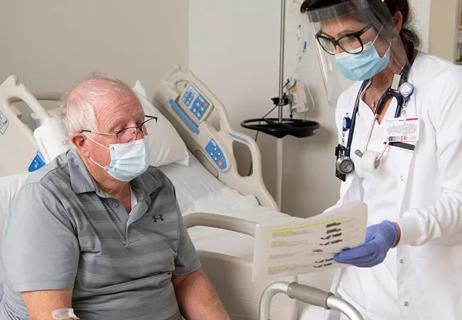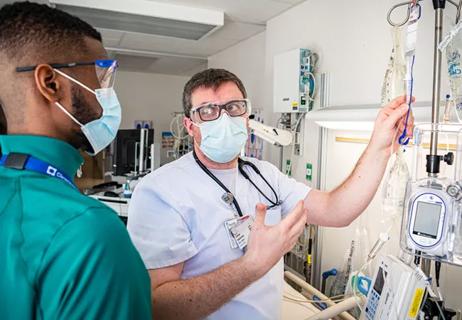How to screen them and get the help they need

Approximately one in five adolescents has a diagnosable mental health disorder and nearly one-third show symptoms of depression, according to the U.S. Department of Health & Human Services. Some of them arrive at emergency departments across the country in crisis.
Cleveland Clinic is a non-profit academic medical center. Advertising on our site helps support our mission. We do not endorse non-Cleveland Clinic products or services. Policy
“It seems to be on the rise,” says Maria Barsa, MSN, RN, CPN, nurse manager of the Pediatric Emergency Department at Cleveland Clinic Fairview Hospital. “Counselors, teachers, parents, police and emergency medical services identify something that is happening or get called about a concern, and they bring kids to us for an evaluation.”
The most common mental health issues seen in the pediatric ED – and for patients admitted to Fairview’s Pediatric and Adolescent Psychiatric Unit – is depression and anxiety with suicidal ideation or following a suicide attempt, says Judy Carlin, BSN, RN, PMH-BC, nurse manager of the Pediatric and Adolescent Psychiatric Unit. Sometimes, however, patients with behavioral health issues present in the ED with seemingly unrelated medical issues, such as asthma or stomach pain.
When patients eight years old and above arrive in the ED, nurses ask them a series of questions during triage, beginning with “Do you feel safe at home?” If the answer to this question generates concerns, or if the patient was admitted for mental health issues, other questions include the following:
The answers are scored based on frequency, and the total number then triggers a psychiatric evaluation from a licensed social worker. The social worker discusses the findings with the attending physician, and together they make recommendations for treatment, which may include admission to the Pediatric and Adolescent Psychiatric Unit.
“The biggest priority in the emergency department is to keep these kids safe,” says Carlin. “That can be hard to do, especially if the ED is overwhelmed by the sheer number of mental health patients that come in.”
To help ensure patient safety, caregivers utilize a checklist that includes reminders such as placing patients with mental health issues in a different colored gown for easy identification, scanning patients with a security wand to make sure they don’t have weapons and removing all their belongings. “There are a lot of safety measures we put in place whether the patient is there for an hour or 10+ hours,” says Barsa. “We go through the same protocol.”
The Pediatric ED also has four “safe rooms” designed to minimize ligature risks. There are no cords, hooks, glass or plastic gloves in the rooms. The garbage cans have paper bags rather than plastic ones, and the cupboards are locked. “We remove everything down to the bare bones,” says Barsa. “It keeps the patients safe, but it also keeps caregivers safe from harm. Anything that is loose or can be thrown becomes a weapon, so staff have to stay on top of their game.” In addition, a sitter remains with patients at all times and documents everything they do or say.
The Pediatric ED at Cleveland Clinic Hillcrest Hospital, which has one safe room, follows the same protocols for adolescents with mental health concerns. “Our top priorities are to keep the patient and the caregiver safe at all times, while continually updating the family regarding the plan of care,” says Janine Stone, BSN, RN, CPEN, nurse manager of the Pediatric ED at Hillcrest Hospital.
Caring for vulnerable populations with mental health issues can be challenging for nurses in emergency departments, who aren’t typically trained in behavioral health nursing. In 2017, Cleveland Clinic piloted a two-day workshop “Communicating with Behavioral Health Patients for the Non-Behavioral Health Nurse” for caregivers in adult inpatient units. This year, the workshop was opened up to all nurses throughout the healthcare system.
Barsa and Carlin offer the following advice to ED nurses when caring for patients with behavioral health issues:
Barsa concludes by reminding ED nurses of their top priority: “We take care of acute needs. Patients come in, maybe because of cutting or an overdose,” she says. “We want to hear them and listen, but our primary role is to stabilize the patient.” Once that’s done, caregivers can work with multidisciplinary healthcare providers to ensure patients receive the best possible therapeutic treatment.

Phone triage system reduces call backs and delays in care

New protocol reduces costs, increases patient and caregiver satisfaction

New options benefit caregivers, nursing units and patients

Nurses facilitate preoperative program to educate and prepare patients for ongoing care

Introduces at-home work and new patient screening tool

Health disparities, mental health and more

Ideas for approaches to prevention, response and more

Educating and developing generations of nurses